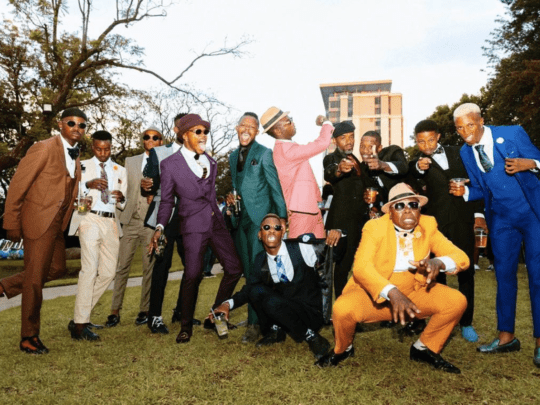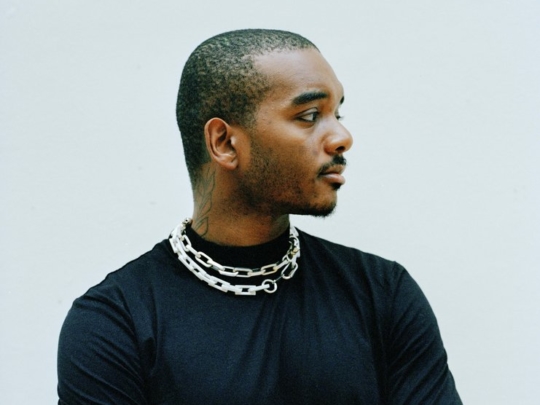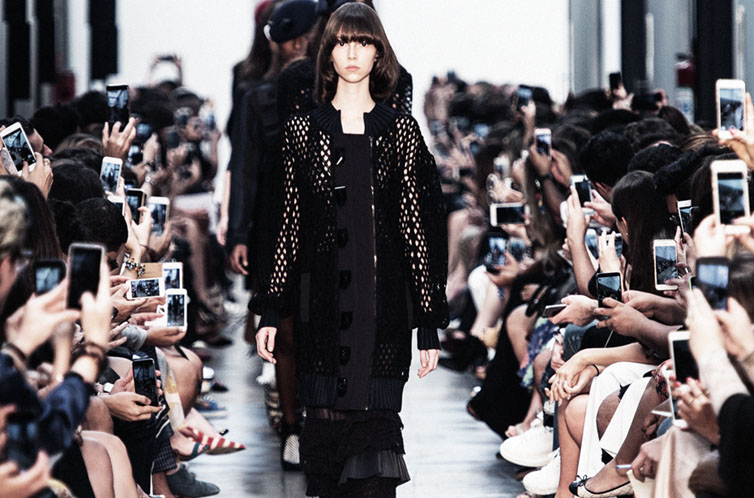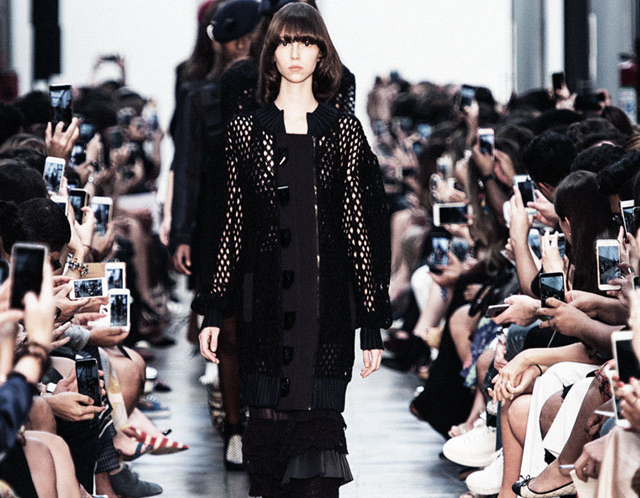Last fall, while I was conducting an interview for Modern Weekly with art director Fabien Baron and Modern Media’s group style editorial director Shaway Yeh, Baron began to lament the adverse effects of social media.
“In this business now,” he explained, “I feel like it’s all about the ‘social’ work. People don’t really put in the effort. They do dinners well, they go to parties, they do Instagram, and this is what seems to be working. This seems to be the important thing to do. Then on the job, they disappear.”
I know people who post pictures in absentia to appease certain publications and press representatives, but I decided to keep my mouth shut.
“When you take a quick snap on your phone and you’ve passed along what you need to say, that message disappears immediately. If you look at all the people you follow, when you’re looking at the feed, which picture do you remember—or do you remember a picture?”
The answer was no.
“People use the tool to climb the industry,” he added. “It’s great to see so many people interested in photography, but what they have to offer is so little. Can they try to be a little bit more? Wouldn’t that be interesting to make it better? Not to be so complacent and to turn the camera on themselves?”
Yeh followed up with an interesting point. “With Instagram and [other social platforms], it’s really about the consumer and the client,” she said. “This is far from the best way to appreciate the image, but it’s a communication tool.” She argued that posts were more like mental notes—artists were still producing beautifully alluring imagery, it was just harder to find them among the noise.
While we could all agree on social media’s positive attributes—increased accessibility and engagement, promoting business, or capturing the zeitgeist—Baron stayed firm on his resolve.
“The entire industry has been focusing on [social media] and I think it’s wrong,” he said. “There’s a bigger message out there: Elevate the quality of your work, number one.”
Elevate the quality of your work. This statement hit home; it neatly described my personal mantra and motivation.
During a recent catch-up with a formidable figure in the industry, I was posed with the following question: “What one thing is it that you do?” I was confused. As a freelancer, no seven days are the same. Routine is rare. Flexibility and flux are the only constants.
“Most people don’t understand the depth of a fashion writer,” my companion continued. “So there needs to be one thing that people remember you by, that you stand for.”
The former, I agreed with. The state of fashion writing has changed dramatically as numbers increasingly favor celebrity-driven tabloid fodder and short, quippy write-ups to long-form think pieces focused on insights. (But maybe this makes our job easier—it takes far less brainpower to compose clickbait, even if it gnaws at the soul.)
The latter comment on championing “one thing,” I found hard to digest. The encouragement was appreciated—a way for me to ascribe meaning in today’s fashion system and to increase my professional visibility—but I felt like I had just drank sour milk.
There are many things that I stand for. I don’t, however, necessarily make them publicly known or put them on a platform. My most “visible cause”—bridging the East-West cultural divide—is itself fraught with such complexity and tension that writing about it at all is a difficult, emotional endeavor. Cultural heritage is precious.
To add more perspective, our conversation took place as a response to my losing out on a high-profile project. This time around, they went with someone who commanded a social media presence, Instagram in particular. They preferred an outgoing street style star to the introverted writer. (One also photographs better than the other.)
But only I am to blame for not putting myself out there enough. My hesitancy to engage in most platforms, however—Instagram, SnapChat, Twitter, WeChat Moments, Weibo, etc.—doesn’t come from a crisis of confidence. It’s more of an existential one.
Do I need to prove through numbers, metrics, and the material, my immaterial worth? Does the exterior world directly correlate to one’s interior? In the delicate dance of online bragging, where is the line really drawn between self-aggrandizement and self-enhancement? Is withholding from toeing the line an indulgence in itself?
French theorist Guy Debord summed it up best in his seminal work Society of the Spectacle. “All that was once directly lived has become mere representation.” He observed that life in the wake of advanced capitalism and commodity fetishism was essentially “the decline of being into having, and having into merely appearing.”
But the payoff of appearing at all, and showing what one has in the form of products and endorsements, is a lucrative multimillion-dollar business. I wonder if there will be a day when it all comes crashing down? Or maybe the opportunity cost of sitting out will cost me my career?
For now, there is nothing more gratifying than experiencing those unconscious moments of transcendence, what New York Times columnist David Brooks defines as limerence, “when the skull line disappears and we are lost in a challenge or a task—when a craftsman feels lost in his craft, when a naturalist feels at one with nature, when a believer feels at one with God’s love.”
It is an entirely internal affair—one that has nothing to do with other people’s “likes,” presence, or recognition, but my own.
Besides, who wants to end up jinxed like Jackie Chan? Not me never, whether online or off.






